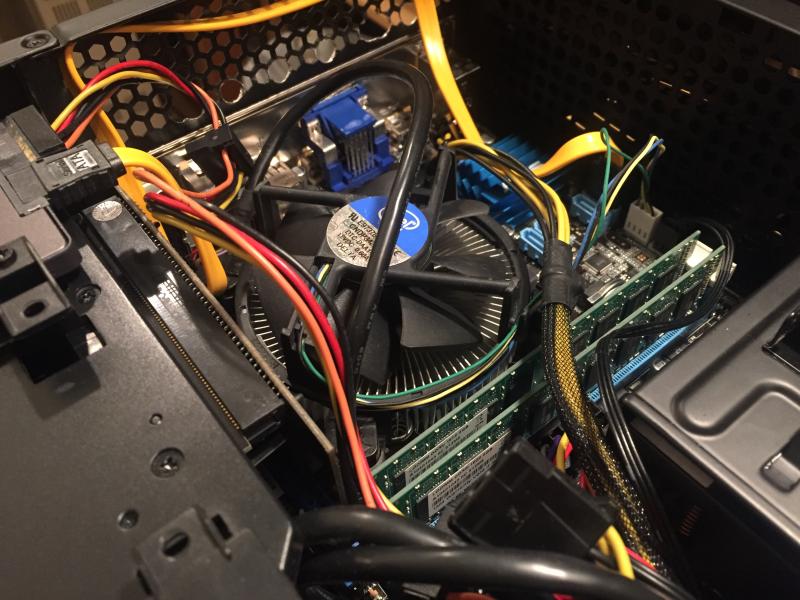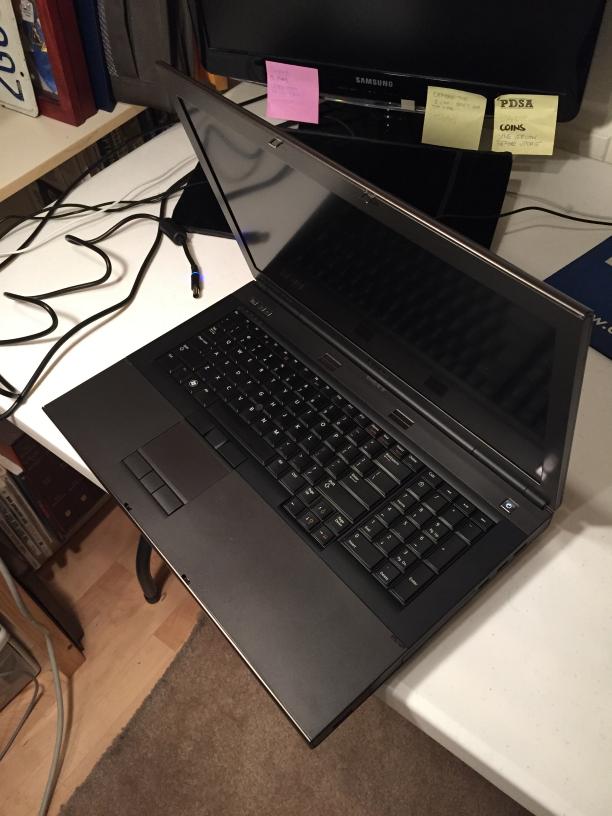
To make a long story short the eGPU setup was a pretty good portable solution, but not that convenient for day to day use, so it was time to put together another cheap desktop!
Continue reading Budget Desktop 2018
To make a long story short the eGPU setup was a pretty good portable solution, but not that convenient for day to day use, so it was time to put together another cheap desktop!
Continue reading Budget Desktop 2018And now for the inevitable post on the HP Elitebook Folio G1, which is my second HP laptop after the TC4200 convertible tablet I had in college. When I was looking for Thunderbolt 3 machines, it was literally the only thing to check the following boxes:
So it has come to my attention that I have too many computers (again). For the first time since college, I have four:
At first, I was thinking about combining just the desktop and the M6600: if I could get a slightly smaller laptop that was slightly more powerful, I thought I’d be okay with that. Unfortunately anything that meets those criteria doesn’t seem to be that cheap. Specifically, I was looking at the Dell Inspiron 15 7559 (these new Dell Inspirons have really useless names) with the GTX 960M, which goes for about $500-$600 used on eBay. This isn’t too bad, but then I still have two laptops.
So I want to combine the last three machines: the Samsung, the desktop, and the M6600, but that means I need an ultra-portable laptop like the Samsung that can still run WoWS maxed out. How can that be possible? Well, technology continues to happen – the passive desktop wasn’t practical until it was, and the M6600 wasn’t cheap until it was. There is a technology that is starting to become practical and cheap, and that is external graphics.
Recently I bought a Dell Precision M6600, and it is enormous. This is the first time I’ve bought a machine like this for personal use.

The M6600 is what they call a “mobile workstation”, which is basically a premium high-spec business laptop. What differentiates “business” from “normal” machines? I would say the lines are pretty fuzzy, especially since all the OEMs tend to have different grades of business laptop, but generally it’s stuff like additional durability, serviceable parts, extended warranties, professional graphics, restrained aesthetics, etc.
In many ways “mobile workstation” and “gaming laptop” are a very similar breed: they’re niche market machines with ultimately “soft” features separating them from their more pedestrian counterparts. What sets “gaming” laptops apart other high-end consumer machines? Apart from specs at the very high-end, it’s often just branding and bling. Much the same could be said comparing “mobile workstations” to other high-end enterprise laptops.
Like the Yoga retrospective, this post is very late on account of the events described having taken place after the soft ending of Nonsense Wars, but I would still like to document my experience with this machine.
When I wrote about my original fanless NUC project I mentioned that the mSATA SSD ran into the 70s even after I attached some tiny aftermarket heatsinks. This was really a sign of things to come: in “production” all of the temps on that machine were higher than I would have liked – not dangerously so, but just enough such that I wasn’t comfortable. So I kept my eye out for a replacement.
Continue reading Fanless Desktop II: Intel NUC5i3MYHE and Akasa Newton S